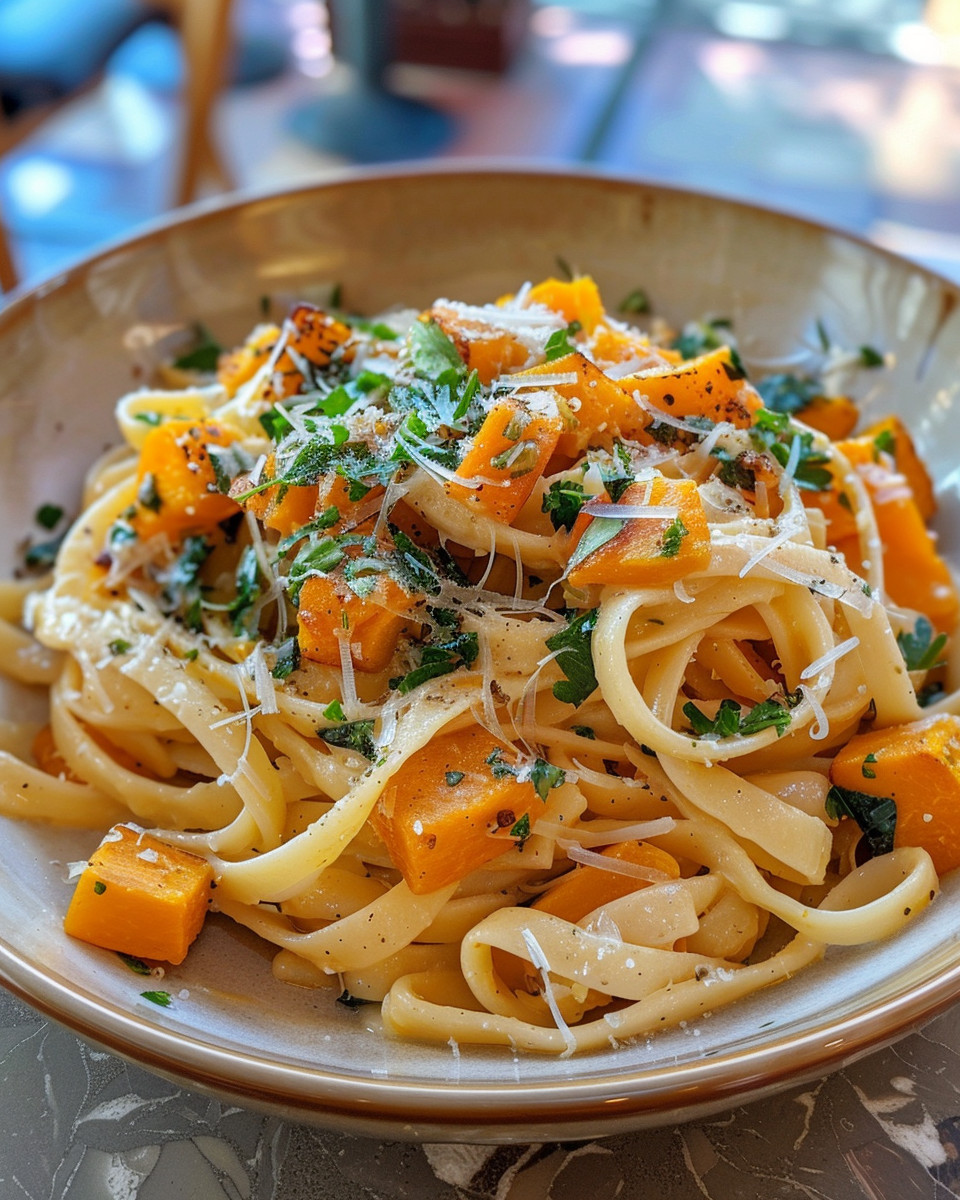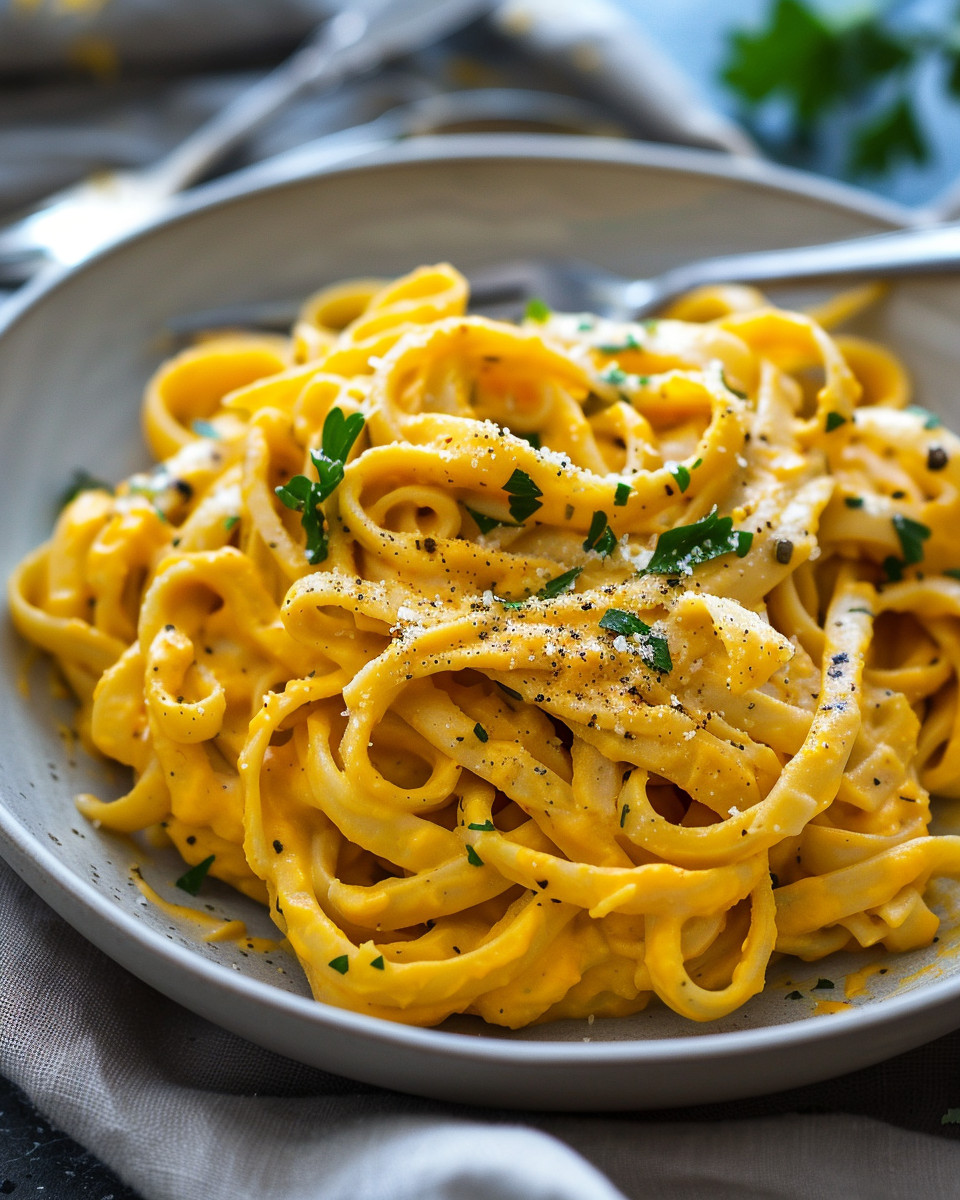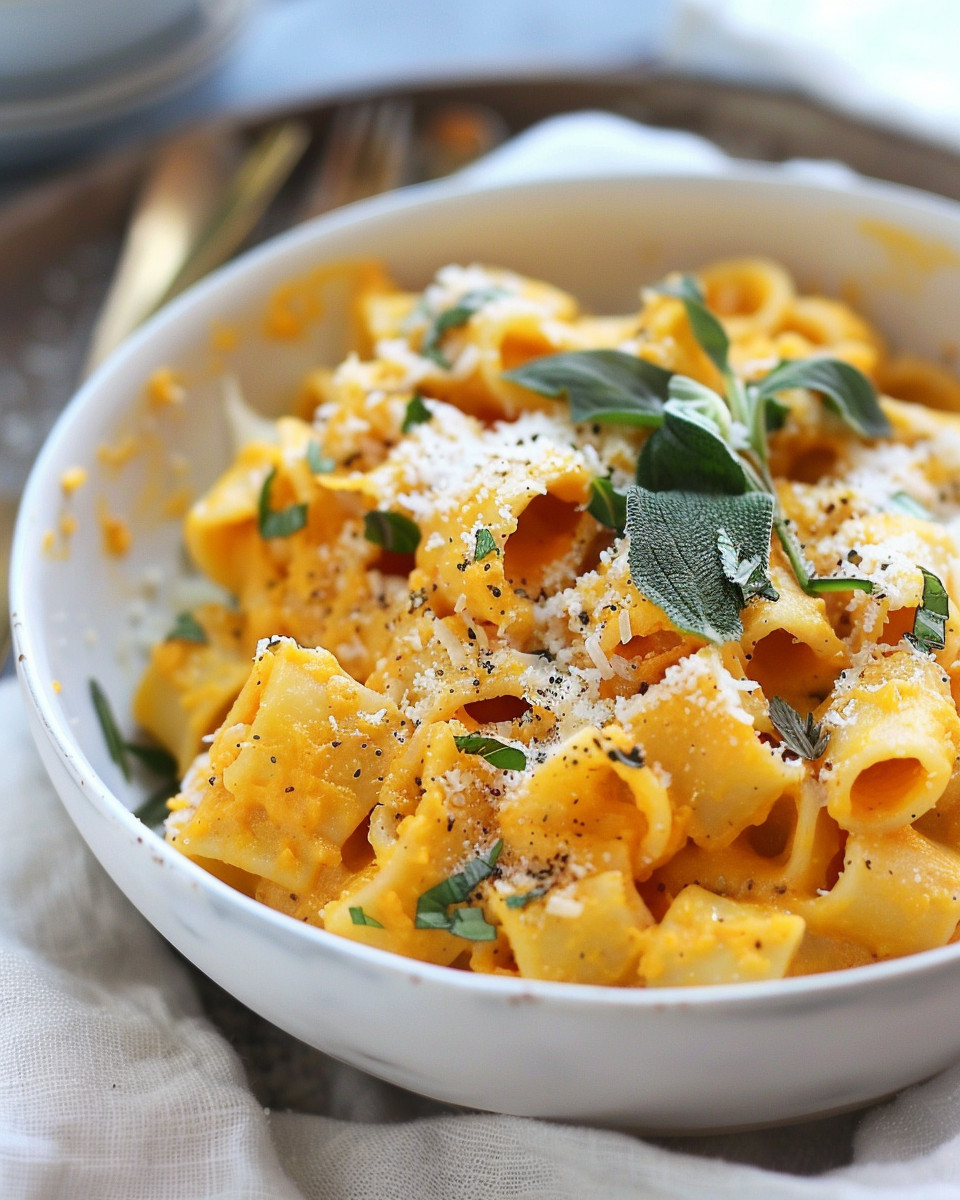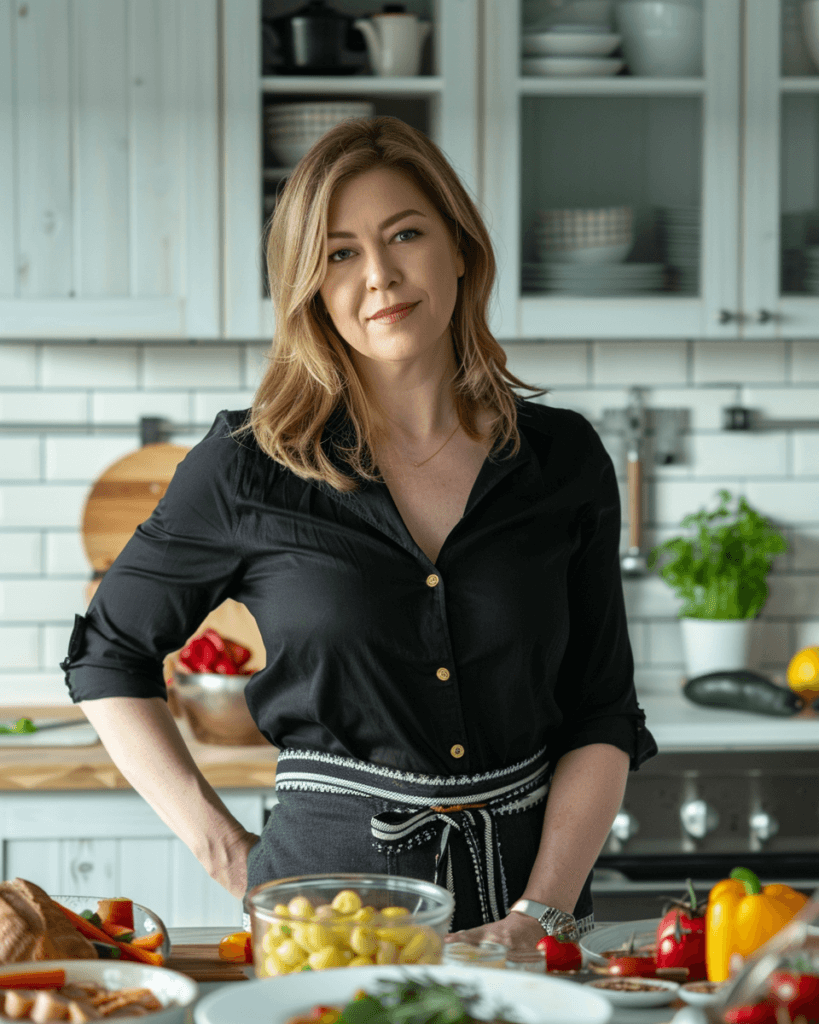You catch the smell through the steam vent and suddenly you are starving. The air around the kitchen fills up with that warm, sweet roasted garlic and squash scent that just pulls you over. You gotta love how pressure cooking helps lock in those flavors like nobody’s business.

Inside the pressure cooker, the butternut squash softens to a tender pull and the garlic mellows out to this lovely rich creaminess. You spot your float valve doing its job while the sealing ring holds it all in tight. When the valve hiss finally signals, you know the pressure build was just right.
By the time you get the pasta tossed with that sauce, and sprinkle on that prosciutto and cheeses, you feel like gifts are coming straight from the kitchen. Nothing fancy, pure comfort cooked up fast. This dish kinda feels like a warm hug on a busy day.
The Truth About Fast Tender Results
- Using your pressure cooker cuts down the roasting time for butternut squash, so you get tender pull way faster than an oven alone.
- The sealing ring keeps all that garlic and herbs aroma locked in, making every bite pop with flavor.
- Keeping an eye on your float valve helps you know when it’s time to release pressure without losing steam.
- Adding fresh thyme and rosemary complements the sweet squash perfectly during the pressure cooking step.
- Reserving pasta water is a sneaky trick to keep your sauce silky and smooth when you mix everything up.
- You don’t gotta rush the pasta after cooking, leaving it al dente works best to grab all that creamy sauce.
All the Pieces for This Meal
- Extra virgin olive oil — this brings everything together and helps roast the squash nicely.
- Butternut squash cubed — two cups is the secret amount to get that perfect squash taste without overpowering.
- Lots of garlic cloves — between six and ten, all roasted to mellow out sharpness.
- Fresh thyme and rosemary — these fresh herbs add earthiness and a bit of piney aroma.
- Crushed red pepper flakes — just a pinch to kick up the flavor without burning your tongue.
- Kosher salt and black pepper — gotta season right so everything tastes just right.
- Prosciutto slices — the salty savory finish on top, crisped a bit in the oven.
- Ricotta cheese — adds creaminess when pureed into the squash sauce.
- Long or short cut pasta — whatever you like or have on hand to toss with that luscious sauce.
- Shredded gouda and grated parmesan — makes the sauce rich and delightfully cheesy.

Your Complete Cooking Timeline
Step 1, preheat your oven to 400 degrees Fahrenheit. This gets ready your squash and garlic for roasting before blending.
Step 2, toss olive oil with the squash, garlic cloves, thyme, and one tablespoon of rosemary on a baking sheet. Add a pinch of crushed red pepper flakes and salt and pepper. Arrange the prosciutto slices around the squash. Bake for 20 minutes and check if the prosciutto is crisping up. Then bake another 10 to 15 minutes until the squash is tender.
Step 3, put the roasted squash, garlic, and ricotta cheese into a food processor. Puree everything till it’s smooth and creamy. Add salt and pepper to taste, you gotta make it just right.
Step 4, bring a large pot of salted water to a boil. Cook the pasta to al dente according to the package instructions. Before draining, scoop out one cup of that starchy pasta water to save.
Step 5, melt the butter in a large skillet with fresh sage and the remaining rosemary. Cook till the butter’s browning and fragrant. Stir in your creamy butternut puree along with half a cup of the reserved pasta water. Mix well.
Step 6, melt in the shredded gouda and parmesan cheeses until gooey. Toss the cooked pasta into this sauce, mixing gently. Add a little reserved pasta water if you want to thin the sauce to perfect consistency.
Step 7, plate it up by dividing the saucy pasta. Top with extra parmesan and prosciutto slices for that salty crunch. Twirl it up and get ready to eat and enjoy!
Valve Hacks You Need to Know
- Make sure your sealing ring is nice and clean before you start so pressure builds properly without leaks.
- When you hear the valve hiss, it’s a good sign your pressure cooker reached the right pressure build; that’s when cooking really begins.
- Use the natural release option for most of your cooking time, but quick release towards the end to prevent overcooking your pasta.
- If your float valve doesn’t rise, double check that the lid is locked tight and the sealing ring is seated right.
When You Finally Get to Eat
As you twirl up your pasta, you notice the creamy sauce hugging each bite packed with roasted garlic and sweet butternut squash. The herbs lift everything with their fresh warmth.
The crispy prosciutto adds a salty crunch that brings out the richness of gouda and parmesan cheeses melting like heaven. Every forkful is comforting and filling, like dinner made for a chill night in.
You take a deep breath, smelling those cozy flavors, and feel yourself relax as the first bite melts into decadent cheesy goodness. This pasta dish really hits the spot and makes you wanna grab seconds.

Making It Last All Week Long
To keep this pasta fresh, store leftovers in an airtight container in your fridge. It stays tasty for about 3 to 4 days. You can reheat gently with a splash of water or broth to bring back that creamy sauce texture.
If you wanna freeze it, pack up the sauced pasta in a freezer-safe container. Thaw overnight in the fridge and warm slowly on the stove or in a microwave, adding a little extra water if it’s thick.
For meal prep, you can keep the sauce separate from the cooked pasta. Just reheat the sauce first, then toss the pasta in before serving to keep it from getting clumpy.
The FAQ Section You Actually Need
- Can I swap prosciutto? Yeah, sun-dried tomatoes work great too. Use around 1/4 to 1/2 cup and add them at the end, no need to roast with squash.
- Where does the sage go? Sage is added when you melt butter in the skillet, right before mixing in the squash puree.
- What if my sauce is too thick? Use reserved pasta water bit by bit to loosen sauce till you get that smooth creamy feel.
- How to get perfectly tender butternut squash? Roast it until you get that tender pull, about 30 to 35 minutes total with the garlic and herbs.
- Can I use different cheeses? For sure. Gruyere or fontina melts well and adds a cozy touch.
- Do I have to use a pressure cooker for this? Not always, but it speeds up the roasting part making the squash super tender in less time.
Explore more cozy dinner ideas like Pressure Cooker Amish Country Casserole and Sheet Pan Sausage and Veggies on our site to expand your cooking repertoire.

Creamy Roasted Garlic Butternut Squash Pasta
Ingredients
Equipment
Method
- Preheat your oven to 400°F to prepare for roasting the squash and garlic.
- Toss olive oil, squash, garlic cloves, thyme, and 1 tbsp rosemary on a baking sheet. Add crushed red pepper flakes, salt, pepper, and arrange prosciutto slices. Roast for 20 minutes, check for crispiness, then continue roasting for 10-15 minutes until squash is tender.
- Puree roasted squash, garlic, and ricotta cheese in a food processor until smooth and creamy. Season with salt and pepper to taste.
- Cook pasta in salted boiling water until al dente, reserving 1 cup of pasta water before draining.
- Melt butter in a skillet with sage and remaining rosemary. When butter browns and is fragrant, stir in butternut puree and 1/2 cup pasta water. Mix well.
- Stir in shredded gouda and grated parmesan until melted. Toss cooked pasta with sauce, adding more pasta water if needed to thin.
- Plate pasta, and top with extra parmesan and crispy prosciutto. Enjoy immediately!

